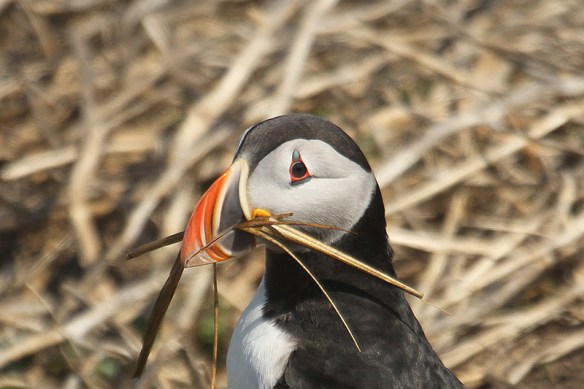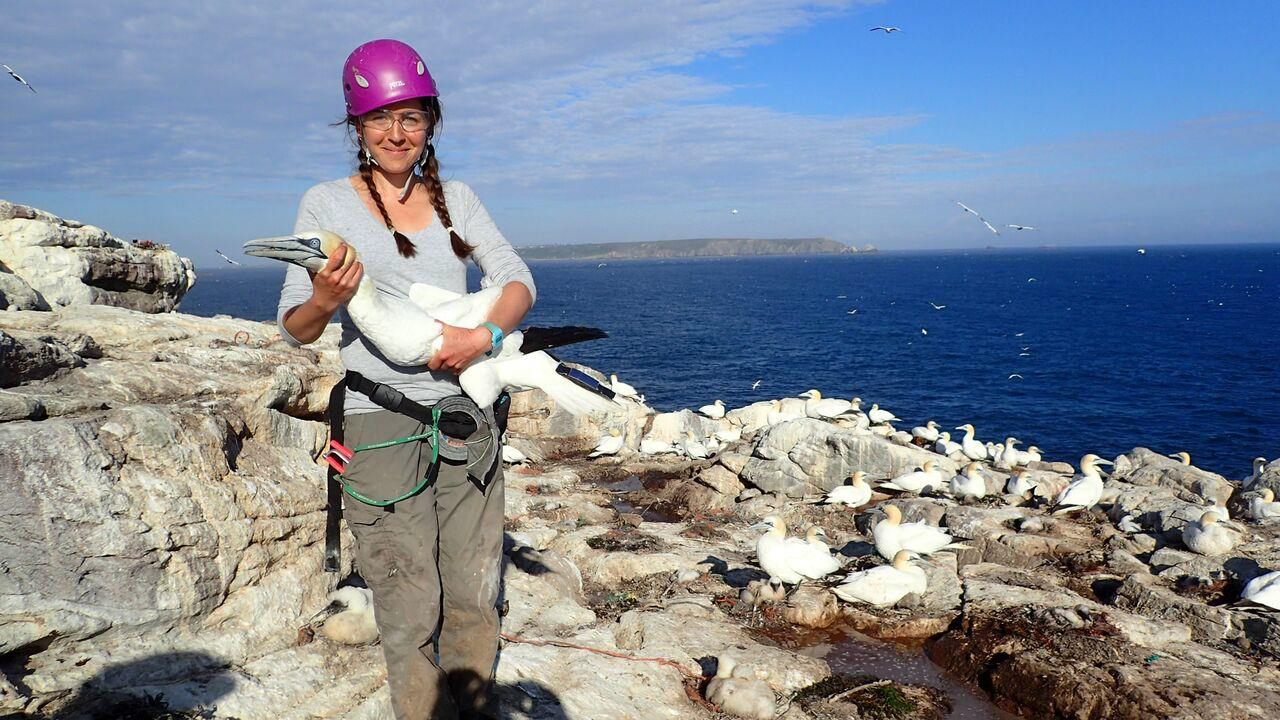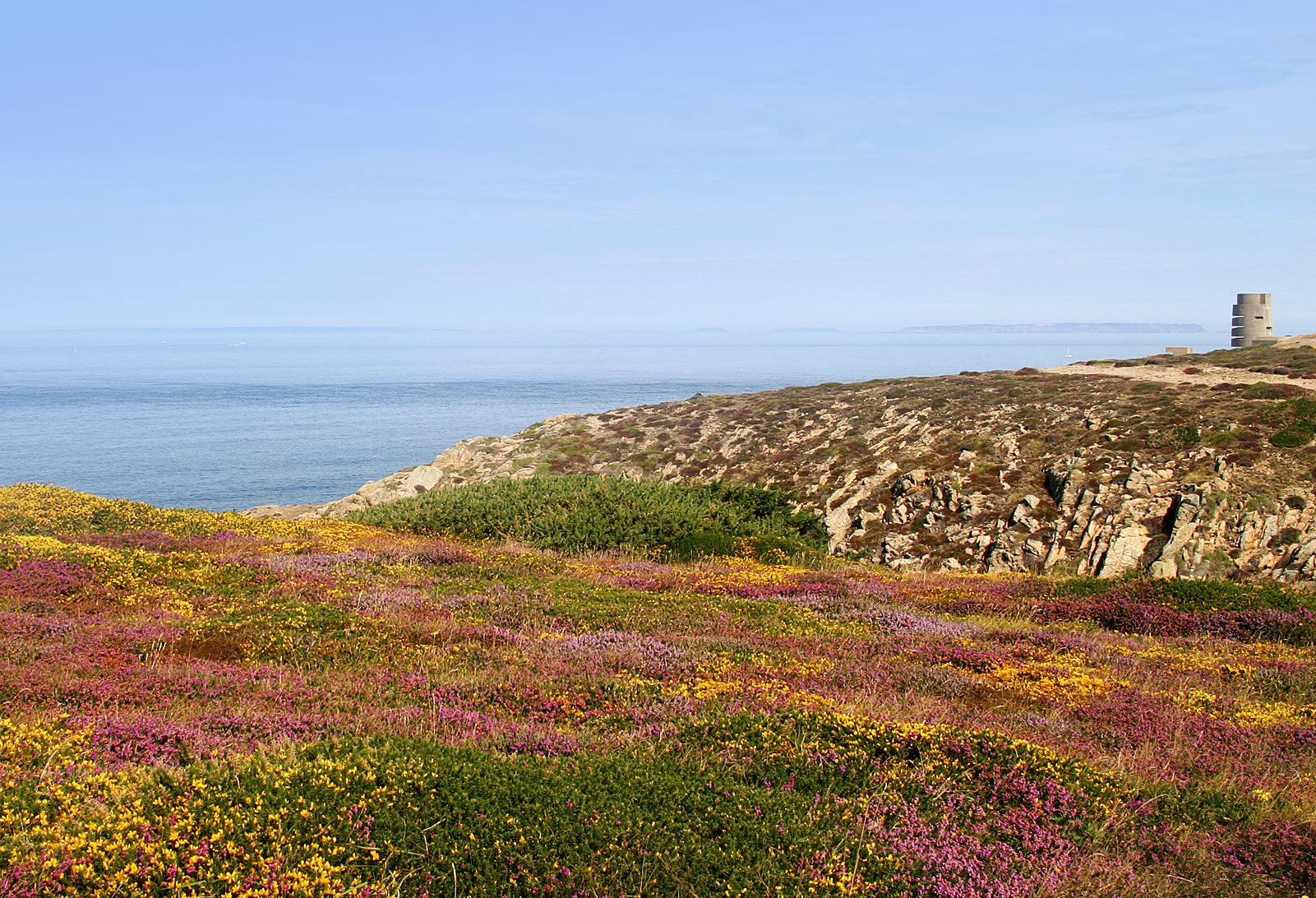 From Rare Bird Alert
From Rare Bird Alert
More than 300 individual puffins have been counted on Lundy Island this year, compared to just five birds ten years ago, thanks to a seabird recovery project.
Rats, which feast on the eggs and chicks of burrow-nesting birds such as puffin, were eradicated from the island between 2002 and 2004 as part of the Lundy Seabird Recovery Project, with the island being formally declared rat-free in 2006. See the BOTE report on the project in the Isles of Scilly and Lundy here
Other seabirds have also thrived, including Manx shearwater, with the most recent figures recording some 3,400 breeding pairs, from a low of only 300 pairs when the recovery project was planned and conducted.
Helen Booker, RSPB senior conservation officer, said: “We expected Manx shearwater would benefit from rat eradication, and we have certainly seen that, but we were much less optimistic about puffin. Ten years ago its population had reached such a low level we worried whether it would survive, to see that puffin is now doing so well really is exciting.”
Becky Macdonald, the Landmark Trust’s warden on Lundy, said: “The increase in Lundy’s seabird colonies, particularly the enigmatic puffin and elegant Manx shearwater, illustrates the importance of seabird recovery projects and the need to protect our seabird populations from controllable threats, such as predation by non-native mammals.”
 The Lundy Seabird Recovery Project was mainly intended to boost the population of Manx shearwater, which were a higher conservation priority at the beginning of the century. But the puffin’s problems have multiplied since: the bird is struggling in northern Scotland, Orkney, Shetland, the Faroe Islands, Norway and Iceland, following a crash in the number of sandeels, the puffin’s preferred diet, probably triggered by warming sea temperatures.
The Lundy Seabird Recovery Project was mainly intended to boost the population of Manx shearwater, which were a higher conservation priority at the beginning of the century. But the puffin’s problems have multiplied since: the bird is struggling in northern Scotland, Orkney, Shetland, the Faroe Islands, Norway and Iceland, following a crash in the number of sandeels, the puffin’s preferred diet, probably triggered by warming sea temperatures.
There has been no breeding at all in some of the northern colonies in ten years. Whereas birds in places such as Lundy, but also in South Wales, Ireland, and elsewhere around the Irish Sea, have been able to exploit alternative food sources, such as pilchards and anchovies, numbers of which appear to be increasing in the southern parts of the puffin’s breeding range.
Dr Euan Dunn, RSPB seabird specialist, said: “puffins are facing serious threats, so it’s really important to have healthy colonies in places like Lundy in order for the bird to retain a resilient population, especially to combat the effects of climate change.
“In numerical terms, Lundy’s population is still modest but in terms of establishing a UK-wide halo of viable puffin breeding stations I attach real significance to this recovery.”
 The Lundy Seabird Recovery Project was a partnership between the RSPB, the Landmark Trust, Natural England, and the National Trust.
The Lundy Seabird Recovery Project was a partnership between the RSPB, the Landmark Trust, Natural England, and the National Trust.
John Holmes, Natural England’s area manager, said: “This is fantastic news and a remarkable result over a relatively short time. It just shows what a concerted effort by a committed group of partners can achieve.”
Rob Joules, the National Trust’s general manager for Lundy, said: “It’s great to reach the ten-year milestone of Lundy being rat-free and to see its wildlife thriving in direct response. This was an incredibly important and worthwhile project to be involved with and it’s great to know the lessons learned are being implemented on other offshore islands around the UK.”
Storm-petrel, which nests in small burrows or crevices among rocks, and whose breeding sites are also often plagued by rat predation, was recorded breeding on the island for the first time in 2014. Because the bird nests in inaccessible places precise figures are difficult to obtain, but up to 100 are now thought to be present.


 Using a combination of
Using a combination of 

 From
From 

 From
From 
 Up to a billion birds die per year in North America as a result of striking windows. How many die here?
Up to a billion birds die per year in North America as a result of striking windows. How many die here?
 From
From  Speaking about the aims of the new study, Prof Jenny Gill, from UEA’s School of Biological Sciences, said: “Many migratory bird populations are declining and very small, isolated, local populations are becoming more common. If females prefer places where males are more abundant, small populations are likely to decline even faster. We wanted to find out whether this is happening.” The UEA/BTO research team used BTO ringing data from
Speaking about the aims of the new study, Prof Jenny Gill, from UEA’s School of Biological Sciences, said: “Many migratory bird populations are declining and very small, isolated, local populations are becoming more common. If females prefer places where males are more abundant, small populations are likely to decline even faster. We wanted to find out whether this is happening.” The UEA/BTO research team used BTO ringing data from  Reflecting, Dr Morrison, said: “In 1994, the male-female ratio was pretty much 50:50 for willow warblers across the UK but, over time, males started to outnumber females. By 2012, males comprised around 60 per cent of the population, with sites with smaller numbers of birds having a greater proportion of males. So, for example, in sites in the north-west of the UK, where willow warblers are very abundant, the male-female ratio was still close to 50:50, but higher proportions of males were common at sites in the south-east, where there are many fewer willow warblers. Unfortunately, as time goes by, we are finding there are more male-dominated sites, probably because ongoing habitat fragmentation means that small populations are becoming more common. As expected, we found proportionately fewer juveniles in male-biased sites.
Reflecting, Dr Morrison, said: “In 1994, the male-female ratio was pretty much 50:50 for willow warblers across the UK but, over time, males started to outnumber females. By 2012, males comprised around 60 per cent of the population, with sites with smaller numbers of birds having a greater proportion of males. So, for example, in sites in the north-west of the UK, where willow warblers are very abundant, the male-female ratio was still close to 50:50, but higher proportions of males were common at sites in the south-east, where there are many fewer willow warblers. Unfortunately, as time goes by, we are finding there are more male-dominated sites, probably because ongoing habitat fragmentation means that small populations are becoming more common. As expected, we found proportionately fewer juveniles in male-biased sites.
 From
From  The researchers used information on wren populations that had been collected by volunteers, including those in the Channel Islands, participating in the
The researchers used information on wren populations that had been collected by volunteers, including those in the Channel Islands, participating in the  Using information collected by bird ringers, the team also found that wren body mass was approximately five per cent lower in the warmest (south-west) than in the coldest (east Scotland) region. As lead author Catriona Morrison, from the
Using information collected by bird ringers, the team also found that wren body mass was approximately five per cent lower in the warmest (south-west) than in the coldest (east Scotland) region. As lead author Catriona Morrison, from the  The findings of this study have particular relevance to our understanding of how birds and other species respond to climate change. Although this work shows that wren populations may adapt to at least some change in temperature, they are short-lived and, therefore, probably more adaptable than most other bird species. Ultimately, the ability of species to cope with climate change will depend upon whether the future rate of warming exceeds their ability to adapt.
The findings of this study have particular relevance to our understanding of how birds and other species respond to climate change. Although this work shows that wren populations may adapt to at least some change in temperature, they are short-lived and, therefore, probably more adaptable than most other bird species. Ultimately, the ability of species to cope with climate change will depend upon whether the future rate of warming exceeds their ability to adapt.
 From
From  Alderney Wildlife Trust (AWT) has once again teamed up with the
Alderney Wildlife Trust (AWT) has once again teamed up with the 




 The IUCN Red List assesses
The IUCN Red List assesses 
 iBats surveyors needed
iBats surveyors needed
 When: Five or six evenings per volunteer in July and five or six evenings per volunteer in August. Transects start 30mins after sunset, require an hour and 20 mins driving which is followed by uploading GPS and bat call data. Survey event may take three hrs from start to finish.
When: Five or six evenings per volunteer in July and five or six evenings per volunteer in August. Transects start 30mins after sunset, require an hour and 20 mins driving which is followed by uploading GPS and bat call data. Survey event may take three hrs from start to finish.



